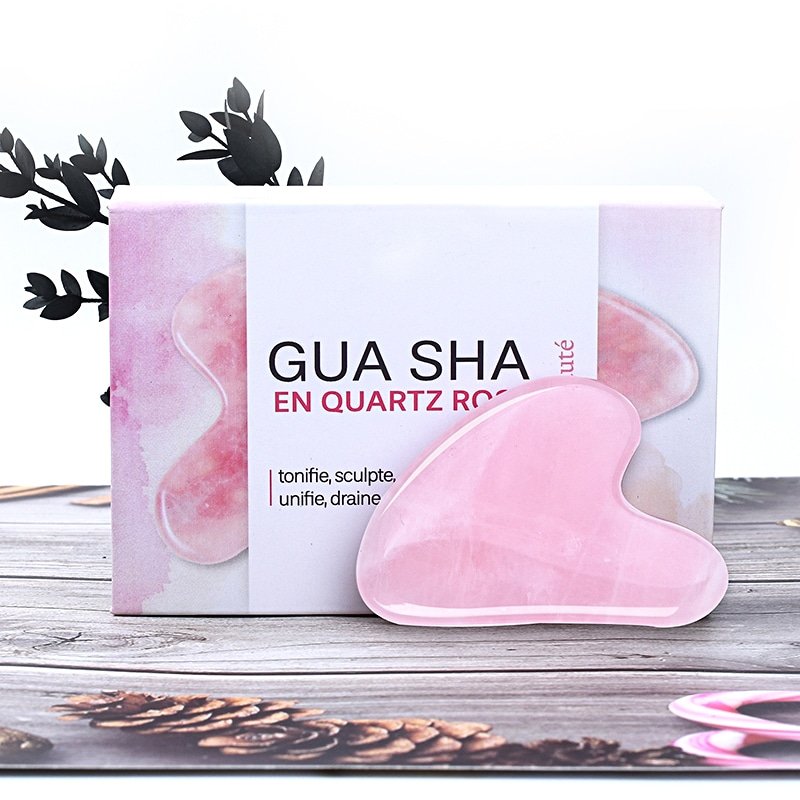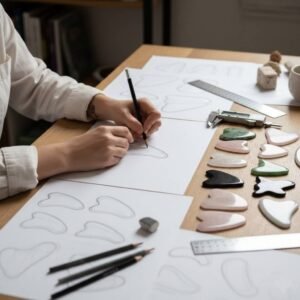
Facial skin massage is a treatment you can do with a practitioner or yourself. The technique involves stimulating pressure points on the face, neck and shoulders.
You can massage your face with lotion, oil, or cleanser, or use a jade roller or gua sha stone.
Facial skin massage helps promote healthy skin while relaxing facial muscles. It has relaxing and rejuvenating effects that help you look and feel better.
Whether you want to use facial massage purely for relaxation or to treat a specific condition, there are plenty of techniques to try.
Read on for a closer look at some of the benefits of facial massage, how to do it yourself, and when it’s best to visit a professional.
- 1. Anti-aging and anti-wrinkle
- 2. Sinus pressure
- 3. Acne
- 4. Temporomandibular joint
- 5. Glowing skin
- 6. Skin blood flow
- 7. Facial rejuvenation
- 8. Manage scar tissue
- Gua Sha Stone Recommend!
1. Anti-aging and anti-wrinkle
One of the main benefits of facial skin massage is its ability to improve the overall appearance of the skin.
A small 2017 study trusted Source examined the effectiveness of facial massage including stimulating massage devices. Participants used the anti-aging device and cream on the face and neck for 8 weeks. The cream’s effect is enhanced when used in conjunction with a facial massage. Wrinkles, sagging skin and texture are all improved.
The researchers also studied the effect of facial massage on isolated skin explants or samples. Use the anti-aging device to massage the skin sample for 1 minute twice a day for 10 consecutive days. Compared to untreated skin explants, the device resulted in higher expression rates of dermal proteins with antiaging effects on the skin.
2. Sinus pressure
You can use massage to relieve sinus pressure, discomfort, and congestion, as long as it’s not an infectious case or an acute phase of sinusitis.
Sinus massage can also help promote mucus drainage, relieve headaches, and improve blood circulation. More in-depth scientific research is needed to confirm and expand the effects of sinus pressure massage.
3. Acne
Stimulating the skin with massage may help improve circulation and reduce the appearance of pimples. Specific studies providing evidence that facial massage improves acne are limited.
Some people swear by olive oil massage to treat acne. Results vary, so if you’re interested in trying it, test it on a small area before massaging your entire face.
Don’t be too aggressive in your approach. Avoid any harsh movements or exfoliation, especially on sensitive areas.
4. Temporomandibular joint
People with temporomandibular joint (TMJ) disease may experience jaw or facial discomfort. This may include a headache, earache, or jaw.
According to the Cleveland Clinic, trigger point massage may help relieve tight, inflamed, or painful jaw muscles. This discomfort can be caused by chewing, clenching, or grinding your teeth.
Massage to relieve symptoms of TMJ can be especially effective when combined with jaw exercises.
5. Glowing skin
If you want bright, glowing skin, a facial massage might just be the ticket. A 2002 study found that 59% of women who received a facial massage reported feeling refreshed and rejuvenated.
About 54% reported soft skin, while 50% reported firmer skin. There is plenty of anecdotal evidence that stimulating facial muscles can help tighten skin, relieve tight muscles, and improve blood circulation.
6. Skin blood flow
Using a facial massage roller has a positive effect on skin blood flow, which may help improve skin appearance.
According to a small 2018 study, people who used a massage roller for a 5-minute facial increased blood flow to the area for at least 10 minutes after the massage. After 5 weeks of massage, the response of blood flow to heat was significantly improved.
7. Facial rejuvenation
Facial massage can help relieve tension while enhancing relaxation and skin health.
8. Manage scar tissue
Gua sha massage can be very beneficial if your facial scar is healing. Massaging the scar tissue and surrounding area may help increase blood flow, relax nearby tissue, and flatten the lump.
Facial massage may also help relieve symptoms such as pain, itching, and tenderness. Researchers found in 2014 that massage therapy was effective in reducing pain and itching, while improving the appearance of burn scars.
Gua Sha Stone Recommend!
- Rose Quartz Gua sha Finger

- Grey Agate Gua Sha Stone

- Metal Gua Sha Stone







